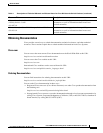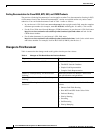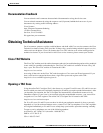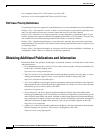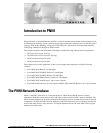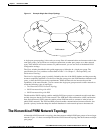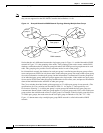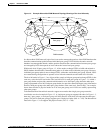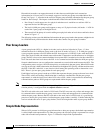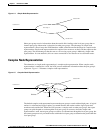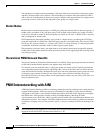
CHAPTER
1-1
Cisco PNNI Network Planning Guide for MGX and SES Products, Release 5
Part Number OL-3847-01 Rev. D0, April, 2004
1
Introduction to PNNI
Private Network-to-Network Interface (PNNI) is a suite of network protocols that can be used to discover
an ATM network topology, create a database of topology information, and route calls over the discovered
topology. With proper planning, setting up a PNNI network is much easier and faster than manually
configuring connections through an ATM network.
This chapter introduces the PNNI network database and the following common network topologies:
• The Single Peer Group Topology
• The Hierarchical PNNI Network Topology
• PNNI Internetworking with AINI
• PNNI Internetworking with IISP
This chapter also provides guidelines on how you can apply these topologies using the following
switches:
• Cisco MGX 8830 Release 3.0 and higher
• Cisco MGX 8850 (PXM1E) Release 3.0 and higher
• Cisco MGX 8850 (PXM45) Release 2.0 and higher
• Cisco MGX 8880 Media Gateway Release 5.0 and higher
• Cisco MGX 8950 with Release 2.1.60 or later software
• Cisco BPX 8600 and Cisco Service Expansion Shelf (SES) with SES Release 1.0 or later software
The PNNI Network Database
PNNI is commonly referred to as a link state protocol, which means that the protocol collects
information about the current state of links and nodes in the network to build a network database. The
PNNI network database can be used to determine the network structure and the current state of network
components. To build the PNNI network database, each PNNI node must receive topology information
from all the other devices in the network. To keep the database current, the node must receive regular
updates from other nodes.





